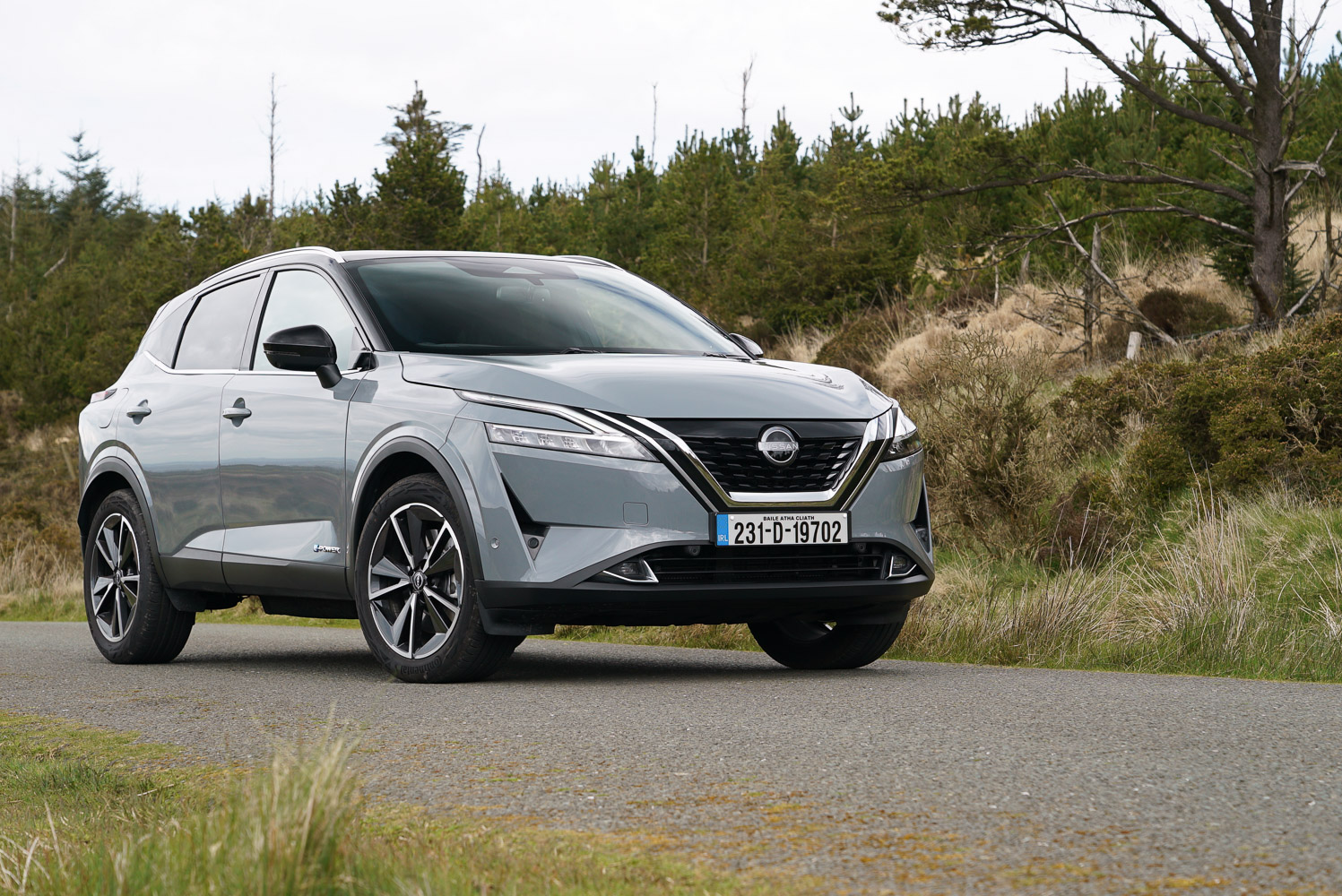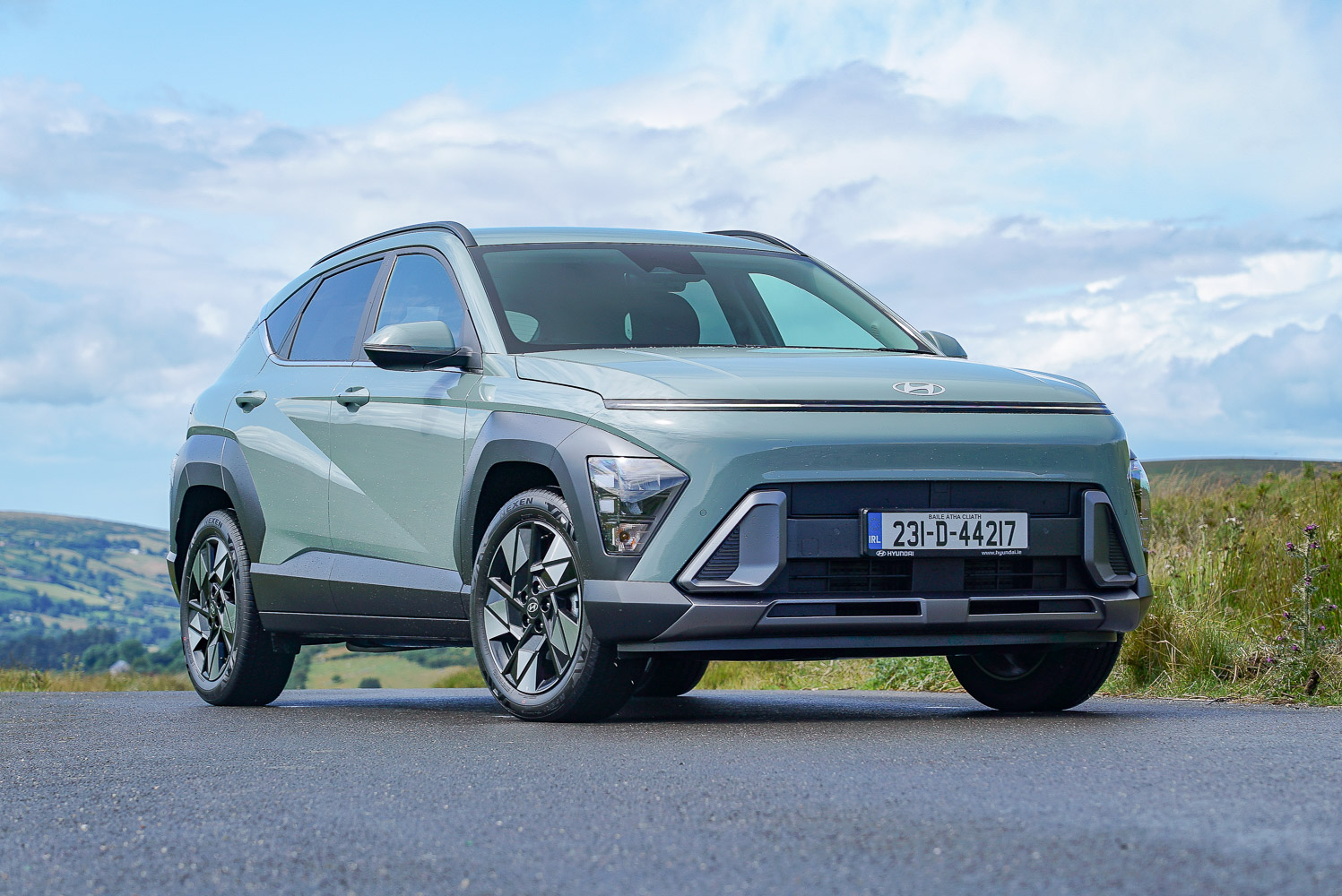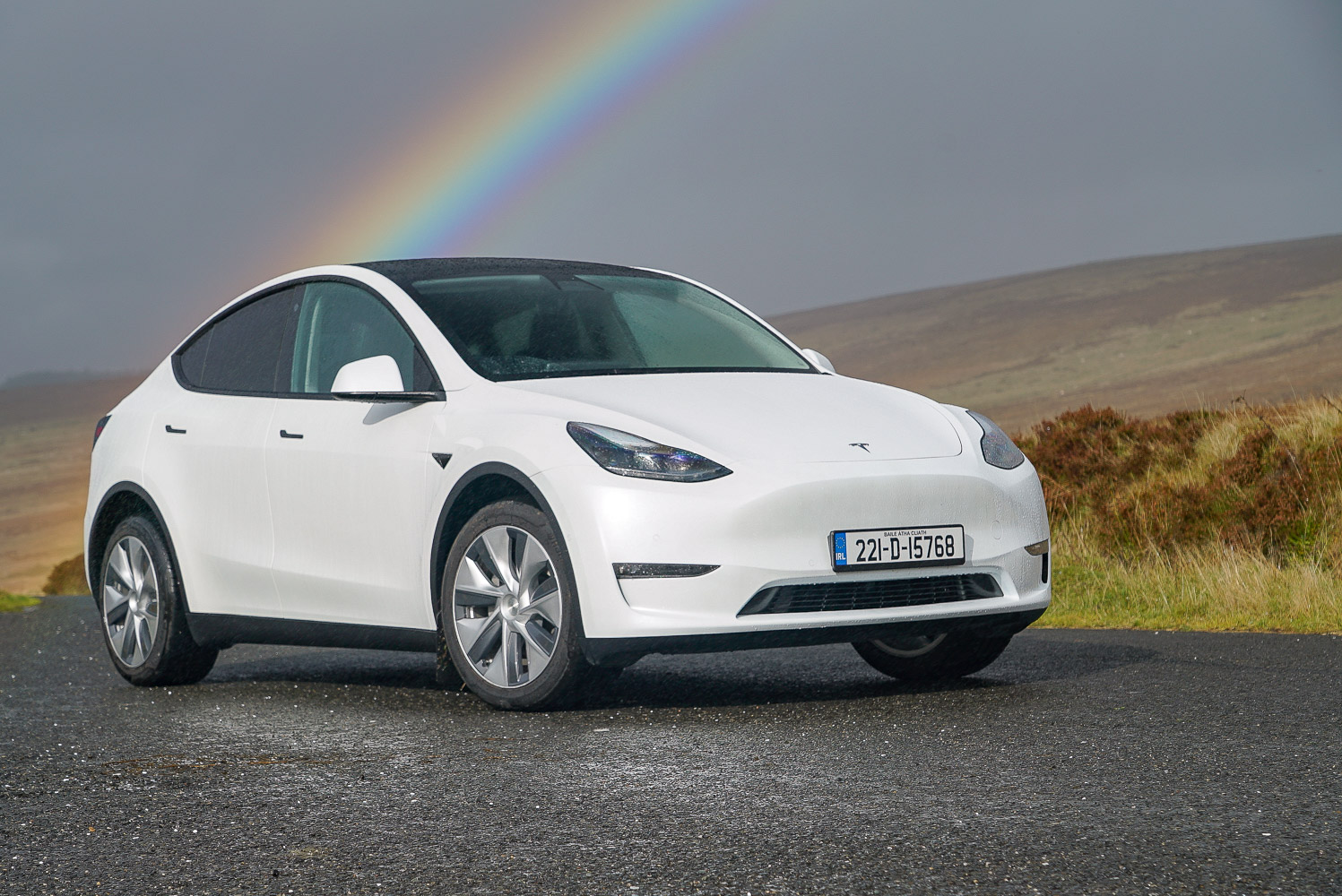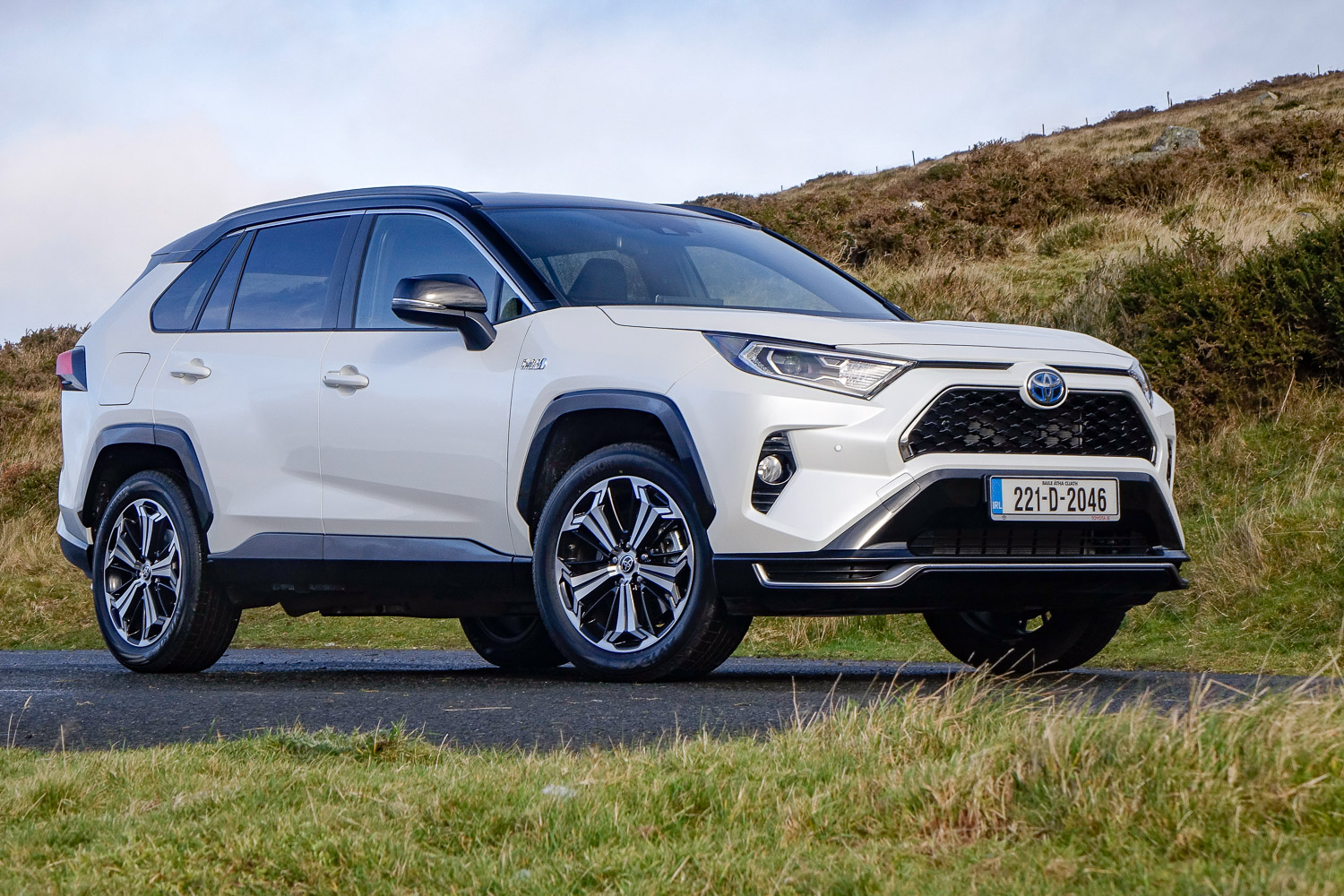Nissan Qashqai e-Power overview
When is a hybrid not a hybrid? For that matter, can an electric car be an electric car if you still put petrol into it? These are the questions that Nissan attempts to answer with the Qashqai e-Power, which manages to both be, and simultaneously not be, an electric car.
Officially, the e-Power system is referred to as a series hybrid. This means that, unlike Toyota's parallel hybrid setup, the Qashqai e-Power is only ever driven by its 190hp, 330Nm electric motor, which powers the front wheels. That motor is fed power by a 1.9kWh battery.
You see, you don't plug the Qashqai e-Power in to charge up that battery. Look up and down the bodywork and you will find a single, solitary access flap which opens up to let you put regular unleaded petrol in. That petrol is burned by a 1.5-litre, turbocharged three-cylinder engine mounted under the bonnet, but which has no connection to the wheels whatsoever. Instead, it's purely there to turn an integrated electricity generator, topping up the battery to keep you rolling.
Nissan has actually had a similar e-Power system on sale in Japan - in the Note - for many years but alongside the larger X-Trail, the Qashqai is giving the system its debut in Europe. Though it's not just a straight transplant; the Japanese-market Note e-Power has been tuned and specified for Japanese driving conditions, which means lots of slow, stop-start city driving. For Europe, the system has had to be totally recalibrated to allow for our driving tastes, including tackling long, high-speed motorway journeys.
So, has it worked? Has Nissan re-invented the hybrid? And is e-Power truly a 'bridging technology' that helps put drivers on the road to fully-electric motoring?
The Nissan Qashqai e-Power model range
Nissan treats the Qashqai e-Power as a separate model to the regular Qashqai, so while you can get a 1.3-litre mild-hybrid Qashqai for as little as €36,100, you're going to have to find €44,000 for the most affordable Qashqai e-Power, the SV.
That comes as standard with a remarkably high standard of safety equipment, including autonomous emergency braking with cyclist detection, lane-keeping steering, blind-spot monitoring, driver attention alert, radar-guided cruise control, high-beam assistance, rear cross-traffic alert and rear parking sensors. You also get 18-inch alloy wheels, electric and heated door mirrors, LED headlights, rain sensing wipers, electric parking brake, rear-view camera, a seven-inch digital instrument screen, an eight-inch central infotainment screen and dual-zone air conditioning.
For €47,400 you can upgrade to the SV Premium model, which adds privacy glass, roof rails, 'graphite' bumper inserts, keyless entry, auto dimming rear-view mirror, 12.3-inch digital instrument panel, 12.3-inch infotainment screen with connected services, a wireless smartphone charger with wireless Apple CarPlay and some extra rear USB sockets.
Then, €50,400 gets you the SV Tech, which adds 19-inch alloy wheels, adaptive LED headlights, a hands-free powered tailgate, part-leather seat trim, eight-way electric driver's seat adjustment, leather steering wheel, a head-up display, ambient cabin lighting, a black roof liner and automated parking.
Finally, there's the €53,400 SVE - our test car's spec - which includes LED front foglamps, door mirrors that automatically tilt down when reversing, Nappa leather seats, electric adjustment for the front passenger seat, memory function activated by the key, heated and massaging seats and heated steering wheel, and a Bose stereo.
On the safety front, thanks in no small part to that impressive standard safety equipment list, the Qashqai does exceptionally well. According to Euro NCAP, it not only gets five stars in the crash test, but it also manages to provide the same 91 per cent protection rating for both adult and child passengers, a crucial factor when you think how many Qashqais are bought as family cars. It also scores a 70 per cent rating for protecting vulnerable road users.
Nissan Ireland currently has a 6.9 per cent APR finance offer in place for the Qashqai e-Power, with repayments starting from €447 per month. Check out the Nissan Ireland website for the most up-to-date offers.
The Nissan Qashqai interior
Having been on sale since 2007, and having - in many ways - become something of the default family car in that time, usurping more traditional models such as the Volkswagen Golf and Ford Mondeo along the way, you'd expect the Qashqai to have a well-thought-out and useable interior. And so it proves.
The first thing you'll notice is the extremely high level of quality. Not all of the materials used are quite from the top drawer, but the overall fit and finish really is excellent. The Nappa leather seats of our SVE test car really do lift the ambience another notch, but the mixture of black and blue leather trim doesn't work as well here as it does in the Ariya electric SUV, as there's not quite enough colour difference between the two in my opinion.
In front of you, the three-spoke steering wheel is chunky and pleasant to hold, and has a slightly flat bottom. Behind that, there's the big 12.3-inch digital instrument screen, which works well and is clear, but which has a slightly awkward menu layout and whose graphics look a tiny bit old-fashioned. Equally, the steering wheel buttons are a little fiddly to use at times. The head-up display, projected onto the windscreen, is excellent.
In the centre of the dash, below the main infotainment screen, are proper physical heating and ventilation controls. Nissan says that these were specifically asked for by customers, and all we can say is bravo to Nissan for listening. They are so much easier to use than on-screen controls.
The screen itself is wide and slightly shallow, which isn't ideal when using the navigation, but which does mean it doesn't poke up into your forward visibility so much. There are plenty of features including online connected services, but again the graphics don't quite look up to date, and the menu layout can be confusing and obstructive at first until you get used to it. Thankfully, the standard Apple CarPlay and Android Auto connections mean you don't have to worry about that very much. Bravo again to Nissan for including a physical volume control as well as a simple, physical button to switch the screen into 'night' mode, which does wonders for your night vision.
On the centre console, there's some nice, brushed inlay that does a decent impression of wood (that's repeated on the dashboard) and up front there's a wireless phone charging tray. In the centre is the automatic drive selector, which slides back and forth ever so slightly in the manner of a computer 'mouse'. To the side of the selector are the buttons to activate both EV mode and the e-Pedal setting, while behind the selector is a small switch to alter the driving mode. There are other buttons, such as the automated parking switch and the electric parking brake.
Under the front-seat armrest, there's useful storage space, split into two levels (one shallow, one deep) and you'll also find two USB sockets (one of each type) in there. There's a 12-volt connection just by the wireless charging pad, too. The door bins are usefully big, and shaped to hold a large bottle of water or a refillable flask, but the glovebox isn't particularly big.
In the back, access and egress is made extremely easy by rear doors that open to near-as-dammit 90 degrees, which is a real boon for getting both the incredibly young and the old in and out. Mind you, legroom is only good, rather than great, and once there, the view out is slightly restricted thanks to rear windows that are smaller than perhaps they might be, but that's compensated for by a rear bench seat that's wide enough to actually get three people sitting across. There is a transmission hump, but it's not massive and the rear centre seat is nice and flat, although anyone sitting there will be gently nudged in the back by the folded-up rear seat armrest. The door bins are a little small - really, they're just big bottle holders - but you do get rear air vents, and on high-spec models such as this, another pair of USB sockets. There are ISOFIX anchors in the outer two seats, too.
The Qashqai's boot is really impressive. With 504 litres of capacity below the luggage cover, it's big enough for most needs, but the cleverest bit is the 'Flexible Luggage Board' system. This gives you both an adjustable height for the boot floor and also allows you to vertically divide up the boot, which is good for keeping clean stuff from mucky stuff, or to stop delicate items from rolling around. The rear seats split-fold 60:40, and although you can't fold them from inside the boot, they do go almost totally flat.
The Nissan Qashqai e-Power driving experience
OK, let's get the unimportant stuff out of the way, here. Well, maybe the 'less' important stuff, because although we - as car enthusiasts - are obsessed with the way a car rides and handles, here the bigger question is how well does the e-Power hybrid system perform?
So, the ride and handling stuff. It's fine. What did you expect? This generation of Qashqai has, generally, proven to be slightly less enthusiastic than the previous model and majors more on comfort and refinement. Its ride quality is particularly good, only occasionally getting tripped up by urban imperfections. For the most part, it's also refined - although that does depend on how you're driving it.
In general, hybrids have engines that rev up and down independently of your acceleration, and that's doubly the case for the Qashqai e-Power, as the engine has no connection to the wheels. It's just there to turn the generator. Nissan has tweaked the e-Power software so that as you accelerate there is at least some relationship between what you're doing and what the engine's doing.
As long as you don't pound the accelerator to the floor, the three-cylinder engine doesn't produce a lot of noise, but at full acceleration it has a slightly coarse note. Nothing unusual there really. Of course, it's not meant to be on all the time and even when you're out of town, you do notice the engine shutting off frequently. Around town, that really does happen a lot, and you can spend a good proportion of your urban mileage with the engine powered down.
The 140kW (that's 190hp) electric motor performs quite well. A 0-100km/h time of 7.9 seconds is respectable, and the 330Nm of torque - which is quite a bit in a car weighing 1,699kg - kicks in instantly, but without the ferocity of some pure-electric models. The smoothness of the power delivery, and the handiness of the e-Pedal braking, might even convince you that Nissan is right, and the e-Power system really might get people started on their electric motoring journey. Indeed, there are plenty of surveys out there which seem to prove that point, that drivers prefer to go hybrid first, before taking the plunge into fully electric power.
Ah, but what about fuel economy? That will depend on where you do most of your driving. For most Qashqai drivers, that's likely to be in and around town, and while we can debate the efficacy of using a tall-ish SUV-like vehicle as an urban car, in town driving we were getting an impressive 4.5 litres per 100km. On the open road, it spikes to about 7.0 litres per 100km on the motorway, leaving us with a test average of 6.8 litres per 100km, which is acceptable. It's worth pointing out that that figure is almost 1.0 litres per 100km better than we managed in a hybrid Kia Sportage. Equally, the sense of serenity you get from having - technically - an electric car that never needs plugging in is quite something, especially if you do have to undertake regular long journeys.
A mixed bag, then? Yes, which is pretty common for hybrid motoring - hybrids tend to be incredibly sensitive to driving style and location - but overall, it's an impressive setup.
Our verdict on the Nissan Qashqai e-Power
The Qashqai e-Power could potentially have been dismissed as an oddity or an oddball, but it manages to provide pretty well-rounded performance and economy. Its fuel consumption will depend on your own driving style and habits, but the Nissan Qashqai's other strong points - comfort, refinement, quality and practicality - shine through anyway.
What do the rest of the team think?
I really like this car and the way it feels like an electric car to drive a lot of the time. I found the engine sound quite subdued and unintrusive and like Neil, noticed that it's actually turned off a lot of the time. The rest of the Qashqai package is worthy of mention too, as it's a spacious and comfortable family car that feels well made and it even drives well enough. A great all-rounder for sure and one that will give those not quite ready to plug a car in yet a taste of what a EV can be like to drive.
Shane O' Donoghue - Editor


























